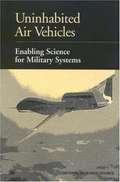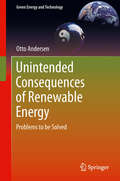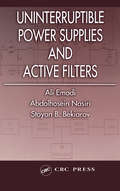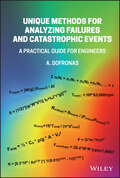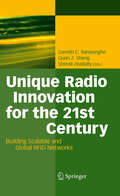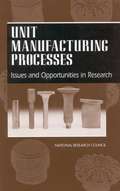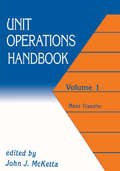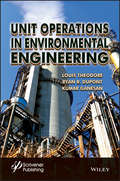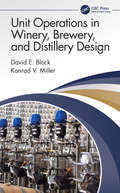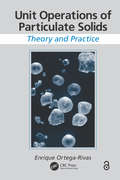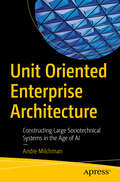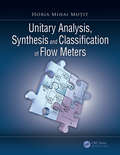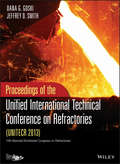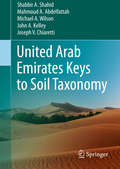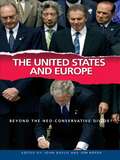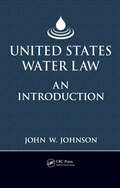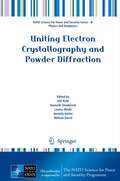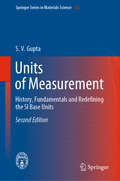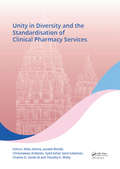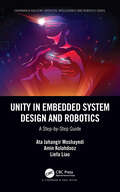- Table View
- List View
Uninhabited Air Vehicles: Enabling Science for Military Systems
by Committee on Materials Structures Aeronautics for Advanced Uninhabited Air VehiclesU.S. Air Force (USAF) planners have envisioned that uninhabited air vehicles (UAVs), working in concert with inhabited vehicles, will become an integral part of the future force structure. Current plans are based on the premise that UAVs have the potential to augment, or even replace, inhabited aircraft in a variety of missions. However, UAV technologies must be better understood before they will be accepted as an alternative to inhabited aircraft on the battlefield. The U.S. Air Force Office of Scientific Research (AFOSR) requested that the National Research Council, through the National Materials Advisory Board and the Aeronautics and Space Engineering Board, identify long-term research opportunities for supporting the development of technologies for UAVs. The objectives of the study were to identify technological developments that would improve the performance and reliability of “generation-after-next” UAVs at lower cost and to recommend areas of fundamental research in materials, structures, and aeronautical technologies. The study focused on innovations in technology that would “leapfrog” current technology development and would be ready for scaling-up in the post-2010 time frame (i.e., ready for use on aircraft by 2025).
Unintended Consequences of Renewable Energy
by Otto AndersenEnergy technologies in the future will need to be based on renewable sources of energy and will, ultimately, need to be sustainable. This book provides insight into unintended, negative impacts and how they can be avoided. In order to steer away from the pitfalls and unintended effects, it is essential that the necessary knowledge is available to the developers and decision makers engaged in renewable energy. The value of this book lies in its presentation of the unintended health and environmental impacts from renewable energies. The book presents results from cross-disciplinary research on the implementation of alternative fuels in the transport sector, namely hydrogen, electricity and biodiesel. This is followed by an assessment of environmental impacts from the production of solar cells. Critical reviews on the use of nanotechnology and nanomaterials in the energy technologies is then provided, with the formation of nanoparticles during combustion of bio-blended diesel and their toxic effects, discussed in detail.
Uninterruptible Power Supplies and Active Filters (Power Electronics and Applications Series)
by Ali Emadi Abdolhosein Nasiri Stoyan B. BekiarovAs industry power demands become increasingly sensitive, power quality distortion becomes a critical issue. The recent increase in nonlinear loads drawing non-sinusoidal currents has seen the introduction of various tools to manage the clean delivery of power. Power demands of medical facilities, data storage and information systems, emergency equipment, etc. require uninterrupted, high quality power. Uninterruptible power supplies (UPS) and active filters provide this delivery.The first to treat these power management tools together in a comprehensive discussion, Uninterruptible Power Supplies and Active Filters compares the similarities of UPS, active filters, and unified power quality conditioners. The book features a description of low-cost and reduced-parts configurations presented for the first time in any publication, along with a presentation of advanced digital controllers. These configurations are vital as industries seek to reduce the cost of power management in their operations.As this field of power management technology continues to grow, industry and academia will come to rely upon the comprehensive treatment found within this book. Industrial engineers in power quality, circuits and devices, and aerospace engineers as well as graduate students will find this a complete and insightful resource for studying and applying the tools of this rapidly developing field.
Unique Chips and Systems (Computer Engineering Series)
by Eugene John Juan RubioWhich came first, the system or the chip? While integrated circuits enable technology for the modern information age, computing, communication, and network chips fuel it. As soon as the integration ability of modern semiconductor technology offers presents opportunities, issues in power consumption, reliability, and form-factor present challenges. The demands of emerging software applications can only be met with unique systems and chips. Drawing on contributors from academia, research, and industry, Unique Systems and Chips explores unique approaches to designing future computing and communication chips and systems.The book focuses on specialized hardware and systems as opposed to general-purpose chips and systems. It covers early conception and simulation, mid-development, application, testing, and performance. The chapter authors introduce new ideas and innovations in unique aspects of chips and system design, then go on to provide in-depth analysis of these ideas. They explore ways in which these chips and systems may be used in further designs or products, spurring innovations beyond the intended scopes of those presented. International in flavor, the book brings industrial and academic perspectives into focus by presenting the full spectrum of applications of chips and systems.
Unique Methods for Analyzing Failures and Catastrophic Events: A Practical Guide for Engineers
by Anthony SofronasA practical and accessible approach to machinery troubleshooting Unique Methods for Analyzing Failures and Catastrophic Events is designed to assist practicing engineers address design and fabrication problems in manufacturing equipment to support safe process operation. Throughout the book, a wealth of real-world case studies and easy-to-understand illustrated examples demonstrate how to use simplified failure analysis methods to produce insights for a wide range of engineering problems. Dr. Anthony Sofronas draws from his five decades of industry experience to help engineers better understand the science behind a particular problem, evaluate the failure analysis of an outside consultant, and recommend the best path forward to management. The author distills sophisticated engineering analysis approaches into compact, user-friendly methodologies that can be easily applied to the readers’ own situations to avoid costly failures. Each chapter includes a thorough summary of the topic, relatable technical examples, and a concluding section with key takeaways and expert tips and advice. This invaluable guide: Helps readers make better decisions while solving complex engineering problems Provides numerous illustrated examples from engineering and science that can be used to develop real-world solutions Features detailed descriptions of both basic and advanced engineering analysis techniques Covers essential technical subjects that facilitate safe facility design and effective troubleshootingUnique Methods for Analyzing Failures and Catastrophic Events: An Illustrated Guide for Engineers is a must-have for chemical, petroleum, and mechanical engineers, reliability managers and technicians, design contractors, and maintenance workers working in process industries.
Unique Radio Innovation for the 21st Century
by Quan Z. Sheng Damith C. Ranasinghe Sherali ZeadallyAre you an engineer or a researcher developing RFID systems? Are you a manager considering deploying RFID-based applications? If so, this book is for you. Covering modern RFID systems, the challenges to RFID implementation are addressed using specific industrial research examples and common integration issues. The primary focus is on answering questions surrounding building scalable global Internet-based RFID networks. Key topics include RFID data management, RFID data processing and integration, Real-Time Locating Systems (RTLS) and sensors. The book considers the challenges of and solutions to building and exploiting global networks to guarantee one of the most important business drivers for modern RFID technology: traceability. The authors have drawn together RFID applications from the retail supply chain, asset and product lifecycle management, anti-counterfeiting and cold chain management to explore how global traceability networks can be created using RFID and sensor technologies. They present insights from world's leading research laboratories.
Unit Manufacturing Processes: Issues and Opportunities in Research
by Unit Manufacturing Process Research CommitteeManufacturing, reduced to its simplest form, involves the sequencing of product forms through a number of different processes. Each individual step, known as an unit manufacturing process, can be viewed as the fundamental building block of a nation's manufacturing capability. A committee of the National Research Council has prepared a report to help define national priorities for research in unit processes. It contains an organizing framework for unit process families, criteria for determining the criticality of a process or manufacturing technology, examples of research opportunities, and a prioritized list of enabling technologies that can lead to the manufacture of products of superior quality at competitive costs. The study was performed under the sponsorship of the National Science Foundation and the Defense Department's Manufacturing Technology Program.
Unit Operations Handbook: Volume 1 (In Two Volumes)
by McKetta John J.Emphasizes the design, control and functioning of various unit operations - offering shortcut methods of calculation along with computer and nomographic solution techniques. Provides practical sections on conversion to and from SI units and cost indexes for quick updating of all cost information.;This book is designed for mechanical, chemical, process design, project, and materials engineers and continuing-education courses in these disciplines.
Unit Operations in Environmental Engineering
by Louis Theodore R. Ryan Dupont Kumar GanesanThe authors have written a practical introductory text exploring the theory and applications of unit operations for environmental engineers that is a comprehensive update to Linvil Rich’s 1961 classic work, “Unit Operations in Sanitary Engineering”. The book is designed to serve as a training tool for those individuals pursuing degrees that include courses on unit operations. Although the literature is inundated with publications in this area emphasizing theory and theoretical derivations, the goal of this book is to present the subject from a strictly pragmatic introductory point-of-view, particularly for those individuals involved with environmental engineering. This book is concerned with unit operations, fluid flow, heat transfer, and mass transfer. Unit operations, by definition, are physical processes although there are some that include chemical and biological reactions. The unit operations approach allows both the practicing engineer and student to compartmentalize the various operations that constitute a process, and emphasizes introductory engineering principles so that the reader can then satisfactorily predict the performance of the various unit operation equipment.
Unit Operations in Food Engineering (Food Preservation Technology)
by Albert Ibarz Gustavo V. Barbosa-CanovasIn order to successfully produce food products with maximum quality, each stage of processing must be well-designed. Unit Operations in Food Engineering systematically presents the basic information necessary to design food processes and the equipment needed to carry them out. It covers the most common food engineering unit operations in detail, in
Unit Operations in Winery, Brewery, and Distillery Design
by David E. Block Konrad V. MillerUnit Operations in Winery, Brewery, and Distillery Design focuses on process design for wineries, breweries, and distilleries; and fills the need for a title that focuses on the challenges inherent to specifying and building alcoholic beverage production facilities. This text walks through the process flow of grapes to wine, grain to beer, and wine and beer to distilled spirits, with an emphasis on the underlying engineering principles, the equipment involved in these processes, and the selection and design of said equipment. Outlines the process flow of alcoholic beverage production Reviews process engineering fundamentals (mass & energy balances, fluid flow, materials receiving & preparation, heat exchange, fermentation, downstream processing, distillation, ageing, packaging, utilities, control systems, and plant layout) and their application to beverage plants Describes the idea of sanitary design and its application to plant operation and design Covers critical equipment parameters for purchasing, operating, and maintaining systems Shows how winery/brewery/distillery can influence product "style" and how "style" can dictate design Features examples of calculations derived from wineries designed by the authors, end of chapter problems, and integrative in-text problems that describe real-world issues and extend understanding Written for both engineers in the alcohol industry and non-engineers looking to understand facility design, this textbook is aimed at students, winemakers, brewers, distillers, and process engineers.
Unit Operations of Particulate Solids: Theory and Practice
by Enrique Ortega-RivasSuitable for practicing engineers and engineers in training, this book covers the most important operations involving particulate solids. Through clear explanations of theoretical principles and practical laboratory exercises, the text provides an understanding of the behavior of powders and pulverized systems. It also helps readers develop skills for operating, optimizing, and innovating particle processing technologies and machinery in order to carry out industrial operations. The author explores common bulk solids processing operations, including milling, agglomeration, fluidization, mixing, and solid-fluid separation.
Unit Oriented Enterprise Architecture: Constructing Large Sociotechnical Systems in the Age of AI
by Andre MilchmanExamine a new approach to Enterprise Architecture (EA) that challenges conventional practices and supports a transformative shift to address the demands of a rapidly evolving technological landscape. This book offers alternatives to traditional EA methods that often divide the enterprise into isolated business, application, data, and technology architectures, often resulting in disjointed operations and missed opportunities for innovation. By proposing an innovative, purpose-driven architectural style, this book emphasizes the need for a cohesive and adaptive framework that aligns all components of an enterprise with its strategic goals. Key concepts explored include the integration of social and technical elements in building large sociotechnical systems, the introduction of Unit Oriented Enterprise Architecture (UOEA) for modular and adaptable enterprise design, and the importance of Purpose Driven Design (PDD) in ensuring operational efficiency and strategic alignment. You’ll also gain insights into organizing software engineering in the cloud era, streamlining enterprise interactions, and embracing creative destruction to foster technological harmony. Unit Oriented Enterprise Architecture is your essential resource for system architects, organizational leaders, IT professionals, and students seeking to revolutionize their approach to enterprise architecture and position their organizations for success in the digital age. What You Will Learn Critically assess and dismantle outdated EA concepts to create a more adaptive and cohesive architectural framework. Explore how UOEA can enhance agility and adaptability, allowing your organization to respond more effectively to change. Organize and manage software development within cloud infrastructures, ensuring clarity, scalability, and alignment with your architectural framework. Who This Book Is For Primary Audience: Enterprise architects, organizational leaders, IT professionals; Secondary Audience: Consultants, advisors, and policymakers; Tertiary Audience: Students in system design and organizational studies, academic researchers
Unit Processes in Drinking Water Treatment
by Willy J. MasscheleinThis text offers information on the theory of major drinking water treatment processes and contains real-life practical examples. It aims to create guidelines for the design of unit processes that operate within an overall framework for water treatment plants.
Unitary Analysis, Synthesis, and Classification of Flow Meters
by Horia Mihai MoțitThis book is the first to present flow measurement as an independent branch of the measurement techniques, according to a new global and unitary approach for the measurement of fluid flow field, starting from finding its unitary fundamental bases. Furthermore, it elaborates the method of unitary analysis/synthesis and classification of compound gauging structures (CGS): the UASC – CGS method. These methods ensure, in a systematic and predictable way, both the analysis of the types of flow meters made until present (i.e. CGS) and the synthesis of new types of flowmeters. The book outlines new contributions in this field, including separately, for flow meters, and CGS: structural schemes and their unitary, unitary classification, unitary logical matrix, method of unitary analysis/synthesis and classification.
UNITECR 2013: Proceedings of the Unified International Technical Conference on Refractories
by Dana Goski Jeffrey D. SmithProceedings containing 231 manuscripts that were submitted and approved for the 13th biennial worldwide refractories congress recognized as the Unified International Technical Conference on Refractories(UNITECR), held September 10-13, 2013.
United Arab Emirates Keys to Soil Taxonomy
by Shabbir A. Shahid Mahmoud A. Abdelfattah Michael A. Wilson John A. Kelley Joseph V. ChiarettiCentral to human life and civilization, soils are an integral part of the physical and cultural environment. Although we may take them for granted, the rise and fall of civilizations is closely linked with the use and abuse of soil and water resources. It is therefore important to evaluate soils for their quality and link them to appropriate uses and services. This book provides information on soil classification and shows how to key out taxa relevant to UAE soils. The latest soil inventory of United Arab Emirates reveals that a rather uniform looking desert landscape has, in fact, a diversity of subsurface features. These features confirm the soil diversity in terms of classification, chemistry, physics, mineralogy, fertility, suitability for different uses and vulnerability to land degradation. United Arab Emirates Keys to Soil Taxonomy presents information for keying out the soils of the United Arab Emirates into separate classes and provides a guide to associated laboratory methods. The classification used predominantly is extracted from the 11th edition of the USDA-NRCS Keys to Soil Taxonomy, and sections relevant to the soils found in the UAE are included here. Primarily, this key is designed to fit the soil system of the United Arab Emirates. Information not found in the USDA key has been added, including criteria and classes for: 1) differentiating anhydritic soils from gypsic soils, 2) identifying "lithic" subgroups for Aquisalids and Haplosalids, 3) identifying "salidic" subgroups within the great groups of Gypsids, Calcids, Psamments, and Orthents, and 4) incorporation of phases for soil taxa. A subsurface diagnostic horizon and mineralogy class (anhydritic), not reported earlier in the world soil literature and, recently found in the UAE, has also been added to the book. The book also offers a mechanism for updating the current soil surveys, and will facilitate the correlation of soils from new surveys in the UAE. Additionally, it will help the international soil science community to converse about UAE soils, and facilitate comparison to soils of other regions. These linkages allow countries with similar mapping and classification procedures and similar soils to transfer agriculture technology without conducting long-term experiments under similar environmental conditions, especially for Gulf Cooperation Council countries (Bahrain, Kuwait, Qatar, Oman, and Saudi Arabia).
The United Nations World Water Development Report 3: Water in a Changing World (Two Vols.)
by World Water World Water Assessment ProgrammeThe United Nations World Water Development Report, published every three years, is a comprehensive review providing an authoritative picture of the state of the world's freshwater resources. It offers best practices as well as in-depth theoretical analyses to help stimulate ideas and actions for better stewardship in the water sector. It is the only report of its kind, resulting from the collaboration and contributions of the 26 UN agencies, commissions, program, funds, secretariats and conventions that have a significant role in addressing global water concerns. The news media are full of talk of crises - in climate change, energy and food and troubled financial markets. These crises are linked to each other and to water resources management. Unresolved, they may lead to increasing political insecurity and conflict. Water is required to meet our fundamental needs and rising living standards and to sustain our planet‘s fragile ecosystems. Pressures on the resource come from a growing and mobile population, social and cultural change, economic development and technological change. Adding complexity and risk is climate change, with impacts on the resource as well as on the sources of pressure on water. The challenges, though substantial, are not insurmountable. The Report shows how some countries have responded. Progress in providing drinking water is heartening, with the Millennium Development Goal target on track in most regions. But other areas remain unaddressed, and after decades of inaction, the problems in water systems are enormous and will worsen if left unattended. Leaders in the water sector can inform decisions outside their domain and manage water resources to achieve agreed socioeconomic objectives and environmental integrity. Leaders in government, the private sector and civil society determine these objectives and allocate human and financial resources to meet them. Recognizing this responsibility, they must act now! Two volume set: 336
The United States and Europe: Beyond the Neo-Conservative Divide? (Contemporary Security Studies)
by Jon Roper John BaylisA penetrating new examination of the triangular political and cultural relationship between America, Britain, and continental Europe. This relationship is both fraught and dynamic. Post-war reconstruction of Europe brought integration. Creating a ‘United States of Europe’ was a goal shared by many Americans. Yet the contemporary 'War on Terror', has redefined relationships between America, Britain, 'old' and 'new' Europe. For Britain, the Channel seems wider than the Atlantic, although geopolitically it is part of Europe. This book brings together experts from Britain, Europe and America to explore the complexities of contemporary cultural and political relationships, considering the challenges that have been met and those that have to be faced.
United States Water Law: An Introduction
by John W. JohnsonA Vital Explanation of Water Law and PolicyBecause demand for and access to quality water far exceeds the current supply, it is increasingly critical to understand the state and federal laws and policies that govern water rights. From farming, fishing, and biology to manufacturing, mine operation, and public water supply, water regulation affects a
Uniting Electron Crystallography and Powder Diffraction
by Anatoly Avilov Kenneth Shankland Louisa Meshi Ute Kolb William I.F DavidThe polycrystalline and nanocrystalline states play an increasingly important role in exploiting the properties of materials, encompassing applications as diverse as pharmaceuticals, catalysts, solar cells and energy storage. A knowledge of the three-dimensional atomic and molecular structure of materials is essential for understanding and controlling their properties, yet traditional single-crystal X-ray diffraction methods lose their power when only polycrystalline and nanocrystalline samples are available. It is here that powder diffraction and single-crystal electron diffraction techniques take over, substantially extending the range of applicability of the crystallographic principles of structure determination. This volume, a collection of teaching contributions presented at the Crystallographic Course in Erice in 2011, clearly describes the fundamentals and the state-of-the-art of powder diffraction and electron diffraction methods in materials characterisation, encompassing a diverse range of disciplines and materials stretching from archeometry to zeolites. As such, it is a comprehensive and valuable resource for those wishing to gain an understanding of the broad applicability of these two rapidly developing fields.
Units of Measurement: History, Fundamentals and Redefining the SI Base Units (Springer Series in Materials Science #122)
by S. V. GuptaThis book delivers a comprehensive overview of units of measurement. Beginning with a historical look at metrology in Ancient India, the book explains fundamental concepts in metrology such as basic, derived and dimensionless quantities, and introduces the concept of quantity calculus. It discusses and critically examines various three and four-dimensional systems of units used both presently and in the past, while explaining why only four base units are needed for a system of measurement. It discusses the Metre Convention as well as the creation of the International Bureau of Weights and Measures, and gives a detailed look at the evolution of the current SI base units of time, length, mass, electric current, temperature, intensity of illumination and substance.This updated second edition is extended with timely new chapters discussing past efforts to redefine the SI base units as well as the most recent 2019 redefinitions based entirely on the speed of light and other fundamental physical constants. Additionally, it provides biographical presentations of many of the historical figures behind commonly used units of measurements, such as Newton, Joule and Ohm, With its accessible and comprehensive treatment of the field, together with its unique presentation of the underlying history, this book is well suited to any student and researcher interested in the practical and historical aspects of the field of metrology.
Unity Game Audio Implementation: A Practical Guide for Beginners
by Andrew CogganUnity Game Audio Implementation offers a unique, practical, project-based approach to learning about aspects of Interactive Game Audio for those who have never used a game engine before and don’t want to learn computer programming right now. The book offers insight into the skills needed to design game-ready sounds in current Digital Audio Workstation (DAW) and shows how to implement these sounds within the Unity game engine. The reader will also learn about interactive music and how to set this up to respond to a variety of events in the game, with the option of adding in their own story and dialogue. All the information is presented in a practical working context from an established Game Audio Sound Designer with AAA games experience. The chapters are accompanied by several game levels teaching all about the techniques and theories before offering instructive steps for how to put them into action. After completing the practical tasks in this book, not only will the reader create an interactive soundscape for a multilevel playable game featuring all their own audio, they will also receive tips on how to use their finished project in support of an application for Video Game Sound Designer jobs.
Unity in Diversity and the Standardisation of Clinical Pharmacy Services: Proceedings of the 17th Asian Conference on Clinical Pharmacy (ACCP 2017), July 28-30, 2017, Yogyakarta, Indonesia
by Elida Zairina, Junaidi Khotib, Chrismawan Ardianto, Syed Azhar Syed Sulaiman, Charles D. Sands III and Timothy E. WeltyUnity in Diversity and the Standardisation of Clinical Pharmacy Services represents the proceedings of the 17th Asian Conference on Clinical Pharmacy (ACCP 2017), held 28—30 July 2017 in Yogyakarta, Indonesia. The primary aim of ACCP 2017 was to bring together experts from all fields of clinical pharmacy to facilitate the discussion and exchange of research ideas and results. The conference provided a forum for the dissemination of knowledge and exchange of experiences. As such, it brought together clinical pharmacy scholars, pharmacy practitioners, policy makers and stakeholders from all areas of pharmacy society and all regions of the world to share their research, knowledge, experiences, concepts, examples of good practice, and critical analysis with their international peers. This year also marks the celebration of 20 years of ACCP. Central themes of the conference and contributed papers were Clinical Pharmacy, Social and Administrative Pharmacy, Pharmacy Education, Pharmacoeconomics, Pharmacoepidemiology, Complementary and Alternative Medicine (CAM) and a number of related topics in the field of Pharmacy.
Unity in Embedded System Design and Robotics: A Step-by-Step Guide (Chapman & Hall/CRC Artificial Intelligence and Robotics Series)
by Ata Jahangir Moshayedi Amin Kolahdooz Liefa LiaoThe first book of its kind, Unity in Embedded System Design and Robotics provides a step-by-step guide to Unity for embedded system design and robotics. It is an open gateway for anyone who wants to learn Unity through real projects and examples as well as a particularly useful aid for both professionals and students in the fields of embedded system design and robotics. Each chapter contains a unique project. The user is guided through the different windows and sections of Unity every step of the way. The book also includes projects that connect Unity to Arduino and Raspberry Pi, which will help readers better understand various Unity applications in the real world.
